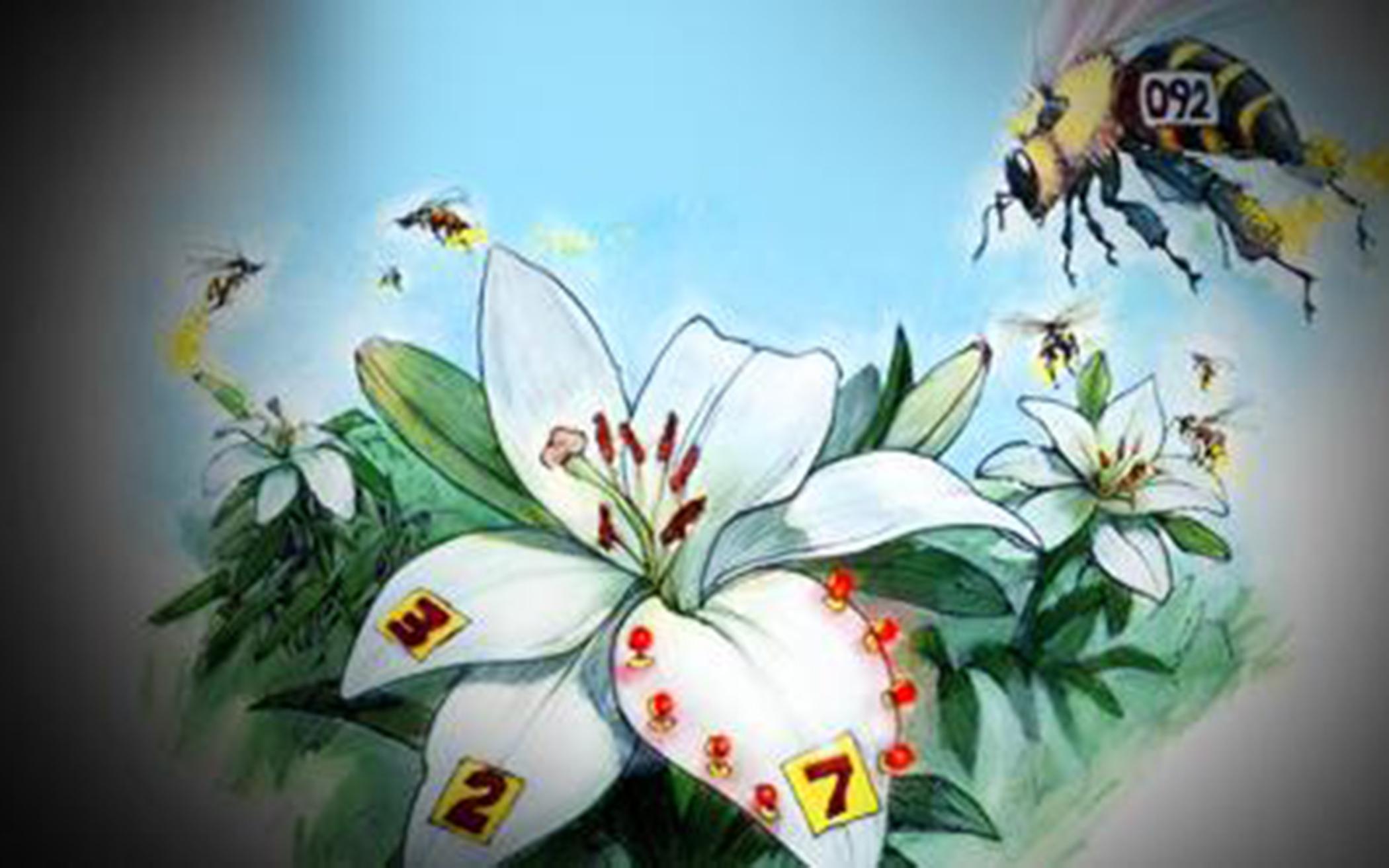It’s amazing what flowers will do to spread their pollen. They must spread it to make good seeds! Read on to find out what’s in a flower’s bag of tricks.
Hide the Nectar
Lots of flowers make nectar, a sweet liquid that attracts insects. Bugs love nectar. Some actually need it to stay alive. The nectar is stored in little “cups” deep down inside the blossoms. Insects have to push past the pollen parts on the outside edge of the blossoms to get to the nectar. Pollen brushes onto their bodies and they carry it to the next flower.
Look closely at some blooming flowers. You’ll probably find the fuzzy pollen parts easily. But you usually won’t find the nectar cups —they’re out of sight. Somehow the bugs know exactly where they are!
Illustration suggestion: a kid looking at a flower thru lens of magnifying glass that shows close-up of pollen parts.
Wear the Right Color
Have you ever seen a bee on a red flower? Not likely. That’s because bees can’t see the color red very well. So flowers that count on bees to spread their pollen don’t wear red.
Hummingbirds, on the other hand, love red flowers. Notice the way “hummingbird flowers” dangle down from the plant when they’re open. That’s so hummers can hover in front of them.
The white flower of a Bladder Campion opens at night. Moths fly at night and can see white easily. They hover rather than land. So the white flower facing straight out is perfect for them.
Flowers that use butterflies to spread pollen—certain lilies, for example—bloom facing upward. That gives the butterflies a nice big landing platform.
Go with the Crowd
Some flowers are just too small to attract attention, so they group together to make one big “flower.” Look closely at a milkweed, Queen Anne’s lace, or daisy. What looks like one big flower is really a whole bouquet of tiny flowers. As bugs travel among the tiny flowers, they pick up lots of nectar and spread lots of pollen.
. . . Or Go It Alone
In most woodlands, flowers blossom in early spring, before the trees leaf out. They get more sunshine that way, and insect pollinators can find them easily.
Wild leek is one flower that doesn’t seem to get it. It blooms well after the trees have leafed out and other flowers have been pollinated. Wild leek flowers stand almost all alone in the woods waiting for bugs to come by.
Fortunately there are always a few insects that cruise the woods after spring bloom. All they see is wild leek. So that’s where they go for nectar. Sometime it makes sense to avoid the crowd and do your own thing!
Put on Perfume
If you go outside just after sunset, you might notice the faint smell of perfume in the air. That could be some flowers up to their old tricks. If they’re pollinated by night flyers, they send out scent signals when those night flyers are out.
Most insects have much more sensitive smell detectors than we do. Imagine how strong those flower scents are to them. They probably feel like you do when you go into a pizza place. Think about it!
Forget about Bugs
. . . or birds, or any other living pollinator. Some flowers simply toss their pollen into the air and let it fall where it may.
Take grass, for instance. If you stop mowing your lawn, grass “goes to seed.” When that happens, it looks like the grass has grown tiny green brushes. Those are actually grass “flowers.”
Hardly anyone ever notices wild grass flowers. That’s because they’re not made to be noticed. They’re on slender stalks that sway in the breeze and release their seeds to the wind.
Some of that pollen has to land in exactly the right place on exactly the right kind of plant. To increase the chances of that happening, the plant makes lots and lots of pollen.
Aaaah-choo!
People who suffer from hay fever are probably allergic to ragweed pollen. Ragweed is a green plant that’s pollinated by wind. It blooms in the fall at about the same time goldenrod blooms. Goldenrod is pollinated by insects. It has big stalks of yellow flowers so bugs notice it—and so do we. Even though its pollen is designed to stick to bugs and is too heavy to float in the air, we blame it for our allergies. Meanwhile, the ragweed plant that really makes us sneeze goes unnoticed. It doesn’t need us—or bugs. But its pollen bugs us!
Enough Already
You get the point: flowers do much more than just bloom. Who knew God made them with such a complex bag of tricks for spreading pollen? Midsummer is the time for you to go out and watch flowers use those tricks.
Watch, wonder, and thank God for a beautiful summer and a wonderful world!
About the Author
Joanne De Jonge is a freelance writer and a former U.S. National Park Ranger. She attends West Valley Christian Fellowship in Phoenix, Ariz.









